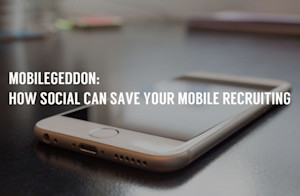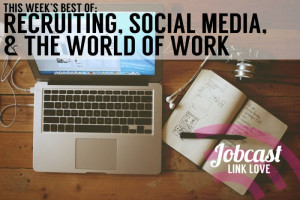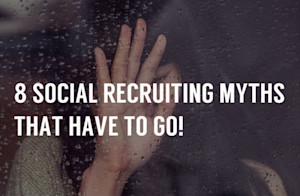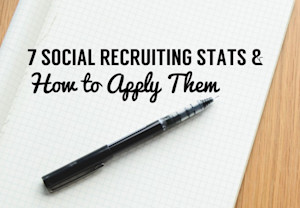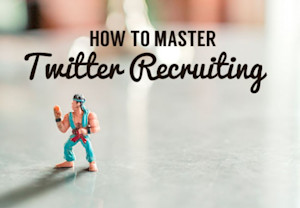On April 21st Google changed its search algorithm in a major way. Google mobile search results will now rank mobile-friendly sites higher than non-mobile-friendly sites. About 38% of Enterprise level websites are negatively affected by this update and millions of sites will take a hit to their SEO. Why does Mobilegeddon matter for recruiting? 30% of all Google searches are employment related. (Source: The Muse) – Click to Tweet Mobile recruiting matters because your company’s site ranking will significantly affect job seekers’ ability to find your job posts. Most companies create their online job postings using an Applicant Tracking System, which makes the situation even more dire for recruitment. According to Mike Roberts, even if they are “mobile-friendly”, many of the most popular ATSs are not responsive. More importantly, they do not allow mobile candidates to upload a resume which is a huge mobile recruiting no-no. Google does not look kindly on this.
Mike also points out that many of the most popular ATSs do not offer any mobile experience at all. Total Google Search fail! Here’s how Mike suggests you check to make sure that your jobs will not be down-ranked by Google:
Enter the URL of your careers homepage into Google’s mobile-friendly checker tool.
Do the same with one of your actual requisitions (because sometimes these are on different systems.)
Search for one of your requisitions on Google—it will actually say “mobile-friendly” in the search engine results page beneath the URL.
Go through the experience of completing one of your own applications on a smartphone.
What if your career site doesn’t pass? If your career site does not pass Google’s mobile-friendliness test, then you risk losing out on a significant number of applicants The best thing that you can do is to upgrade to a site that is mobile-friendly and built with responsive design. This is the only real long-term solution for mobile recruiting, but it isn’t a quick one. While you wait on tech to bring your career site into the 21st century, you can keep your online recruitment process healthy by focusing on social recruiting.
The mobile web is twice as social as desktop, according to a study of 2.4 million websites by ShareThis. 71% of social media use is on mobile, 76% of Twitter users access the network on mobile, and 1.1 million users access Facebook via tablet or phone. If your job posts are getting buried in Google’s new search, then you can use social sharing to ensure that mobile jobseekers find them. Sharing job posts to your Twitter feed, Facebook Timeline, and LinkedIn Page gives mobile users a way to access your job posts other than Google search. This is not a perfect fix, but it is a great way to maintain a mobile presence while your website is brought up to speed. What about the application process? Google did not decide to bring Mobilegeddon upon us out of some deep-seated hatred for the human resources department. They changed their algorithm in order to improve their user’s experience. Google’s mobile users do not want to waste their time attempting to navigate a site that is not responsive, so hiding these sites (and possibly your site) from them improves their overall experience. If you do decide to share your jobs via social media to reach mobile candidates, then you must also give them a way to apply to those jobs on their phone or tablet. If you do not provide them with this option, then your candidate experience suffers. To make your application process mobile-friendly, try using a social recruitment app. There are many different apps that will allow you to set up a Career Page on Facebook, where mobile candidates can both apply for, and view your jobs. Jobcast, TweetMyJobs and Work4labs to name a few! One thing to note is that Facebook does not allow these “third party apps” to display a tab on your company Facebook Page, which can make accessing your Career Page difficult for candidates. Here’s a trick for getting around this problem:
Create a Facebook Post with a call to action that encourages job seekers to check out your Career Page.
Add a direct link to your Facebook Career Page and a nice image.
Then “Pin” that post to the top of your Facebook Timeline.
Just like Beyond Recruitment did here:
This gives mobile jobseekers an easy way to access your Career Page and apply for your jobs. To give this a try with Jobcast Premium follow this link to install the Jobcast social recruiting app and you’ll get a 30-day free trial.
Read More